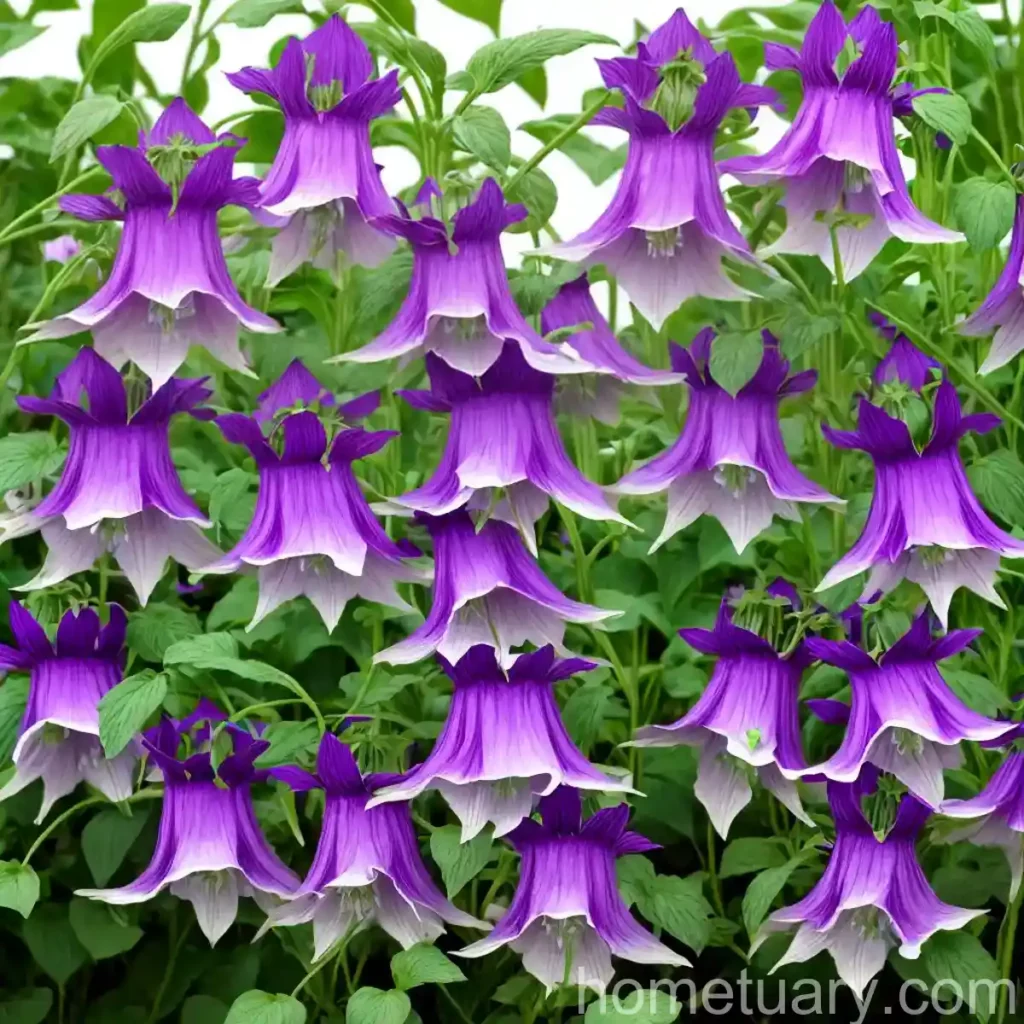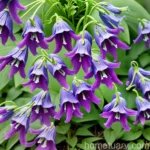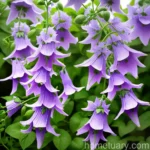Bellflower (Campanula ‘Sarastro’): A Complete Guide
Introduction
In the world of gardening, there are few plants as enchanting and versatile as the bellflower, scientifically known as Campanula. Within this diverse genus, the ‘Sarastro’ variety, in particular, stands out for its striking beauty and adaptability in various garden settings. With its vibrant blooms and easy-to-care-for nature, bellflower ‘Sarastro’ has become a favorite among gardeners and plant enthusiasts.
In this comprehensive guide, we will delve deep into the world of bellflower ‘Sarastro’, exploring its characteristics, growing requirements, uses, maintenance tips, and much more. Whether you are a seasoned gardener or someone just beginning their plant journey, this resource aims to provide all the information you need to cultivate and enjoy the beauty of Campanula ‘Sarastro’ to its fullest potential.
What is Bellflower (Campanula ‘Sarastro’)?
The bellflower ‘Sarastro’ is a stunning perennial plant celebrated for its breathtaking bell-shaped flowers that come in vivid shades of deep purple. This cultivar is part of the Campanula genus, which encompasses a wide array of species, all of which are renowned for their charming, bell-like blossoms.
Campanula ‘Sarastro’ boasts a compact growth habit and typically reaches a height of about 12-16 inches, making it well-suited for borders, containers, and rock gardens. Its rich, vibrant blooms and lush foliage make it an ideal choice for adding a pop of color and visual interest to any outdoor space.
Let’s delve into the various aspects of caring for and enjoying the beauty of bellflower ‘Sarastro’:
Key Takeaways – Bellflower (Campanula ‘Sarastro’)
Before we dive into the specifics of growing and caring for bellflower ‘Sarastro’, let’s take a look at the key takeaways for this remarkable plant:
- Scientific Name: Campanula ‘Sarastro’
- Plant Type: Perennial
- Flower Color: Deep Purple
- Height: 12-16 inches
- Uses: Borders, Containers, Rock Gardens
- Growth Habit: Compact
- Attracts: Pollinators
- Hardiness Zones: 3-8
With these essential details in mind, let’s explore the various aspects of cultivating and nurturing bellflower ‘Sarastro’ to ensure its health and vibrancy in your garden.
Culture
Uses
Bellflower ‘Sarastro’ is a versatile plant that can be used in a variety of garden settings to create stunning visual displays. Some of its common uses include:
- Border Planting: The compact size and striking blooms of ‘Sarastro’ make it an excellent choice for defining borders and edging garden beds.
- Container Gardening: Its adaptability to container cultivation allows it to grace patios, balconies, and other outdoor spaces with its colorful presence.
- Rock Gardens: The low-growing, clumping nature of the plant makes it a natural fit for rock gardens, where it adds a touch of elegance and charm.
Water
One of the most critical aspects of bellflower ‘Sarastro’ care is providing it with adequate and consistent moisture, especially during the active growing season. While the plant does not tolerate waterlogged conditions, it thrives in well-draining soil that retains moisture without becoming saturated. Here are some guidelines for watering ‘Sarastro’:
- Frequency: Water the plant deeply once or twice a week, ensuring that the soil is evenly moist but not waterlogged.
- Morning Watering: It’s best to water the plant in the morning, allowing any excess moisture to evaporate during the day and preventing issues such as root rot.
- Mulching: Applying a layer of organic mulch around the base of the plant helps retain soil moisture and regulate the temperature around the roots.
Sunlight
Proper sunlight is essential for the growth and blooming of bellflower ‘Sarastro’. This plant thrives in bright, filtered sunlight and can tolerate partial shade, especially in regions with intense afternoon sun. Here are some sunlight-related considerations for ‘Sarastro’:
- Optimal Exposure: Provide the plant with about 6-8 hours of sunlight per day, either in the form of direct morning sun or dappled light throughout the day.
- Shade Tolerance: In hotter climates, ‘Sarastro’ benefits from some afternoon shade to protect it from the harsh sun, particularly during the peak of summer.
Fertilizer
Applying a balanced fertilizer can enhance the growth and flowering of bellflower ‘Sarastro’ and ensure that it receives the essential nutrients for its overall health. However, it’s crucial to avoid over-fertilization, which can lead to excessive foliage growth at the expense of flowers. Here are some fertilizer recommendations for ‘Sarastro’:
- Timing: Apply a slow-release, balanced fertilizer in early spring before the active growing season begins.
- Frequency: Follow the manufacturer’s instructions for application frequency, typically every 6-8 weeks during the growing season.
- Dilution: If using a liquid fertilizer, dilute it to half-strength to reduce the risk of overfeeding.
Soil
Bellflower ‘Sarastro’ thrives in well-draining, fertile soil with a slightly acidic to neutral pH. The right soil conditions can support healthy root development and provide an ideal environment for the plant to flourish. Consider the following soil-related tips for ‘Sarastro’:
- Composition: Use a well-draining, loamy soil enriched with organic matter, such as compost, to improve its structure and fertility.
- pH Level: Aim for a soil pH of around 6.0 to 7.0, which falls within the slightly acidic to neutral range and is conducive to ‘Sarastro’s’ growth.
- Container Soil: When growing ‘Sarastro’ in containers, ensure that the potting mix provides adequate drainage while retaining moisture to support the plant’s needs.
Pruning
Pruning is essential for maintaining the health, appearance, and longevity of bellflower ‘Sarastro’. By removing spent blooms and shaping the plant as needed, you can encourage continuous flowering and prevent the plant from becoming leggy. Here are some pruning considerations for ‘Sarastro’:
- Deadheading: Regularly remove faded flowers by snipping them off just below the flower head to promote new blooms and prevent the plant from setting seed.
- Cutting Back: After the initial flowering period, consider lightly shearing the plant to encourage bushier growth and a second flush of blooms later in the season.
- Fall Cleanup: In late fall or early spring, prune any dead or damaged foliage to maintain the plant’s overall health and appearance.
Propagation
Propagating bellflower ‘Sarastro’ allows you to expand your collection of these lovely plants while preserving their desirable traits. The most common methods of propagation for ‘Sarastro’ include division and stem cuttings. Here’s a brief overview of both techniques:
Division
- Divide established clumps of ‘Sarastro’ in early spring or early fall.
- Carefully lift the plant from the ground and separate the root mass into sections, each containing healthy roots and shoots.
- Replant the divisions in prepared soil, keeping them well-watered until they establish themselves.
Stem Cuttings
- Take 4-6 inch cuttings from healthy ‘Sarastro’ plants in early summer, ensuring each cutting has several sets of leaves.
- Remove the lower leaves and dip the cut end in rooting hormone to promote root development.
- Plant the cuttings in a well-draining potting mix, keeping them consistently moist until new growth emerges.
Container Popularity
Bellflower ‘Sarastro’ is a popular choice for container gardening due to its compact size, vibrant blooms, and adaptability to confined spaces. When selecting a container for ‘Sarastro’, consider the following tips:
- Size: Choose a container that provides ample room for the plant’s roots to grow and has drainage holes to prevent waterlogging.
- Material: Opt for a durable, weather-resistant material such as terracotta, ceramic, or lightweight resin that complements the plant’s aesthetic.
- Maintenance: Regularly check the moisture levels and root health of ‘Sarastro’ in containers, as they may dry out more quickly than plants in the ground.
Common Diseases
While bellflower ‘Sarastro’ is generally resilient, it can be susceptible to certain diseases and issues that may affect its health and vigor. Being aware of these potential problems and taking preventative measures can help safeguard the plant. Some common diseases include:
- Powdery Mildew: A fungal disease that manifests as a powdery white coating on the foliage, often caused by high humidity and poor air circulation.
- Root Rot: Resulting from overly wet soil conditions, root rot can lead to wilting, yellowing foliage, and overall decline in the plant’s health.
- Botrytis Blight: This gray mold disease thrives in cool, damp conditions and may affect the stems and flowers of ‘Sarastro’, causing them to rot.
Disease Diagnosis
When diagnosing and addressing potential diseases affecting bellflower ‘Sarastro’, it’s essential to closely observe the plant and take prompt action to mitigate the issues. Here are some tips for disease diagnosis:
- Visual Inspection: Regularly inspect the plant for any signs of unusual discoloration, powdery residues, or wilting that may indicate a disease.
- Foliage Examination: Check the leaves for spots, lesions, or abnormal growth patterns that may suggest a fungal or bacterial infection.
- Soil Assessment: Monitor the moisture levels and drainage in the soil to prevent root-related diseases such as rot and fungal infections.
Common Pests
In addition to diseases, bellflower ‘Sarastro’ may also face challenges from various pests that can compromise its health and appearance. Vigilance and proactive pest management can help protect the plant from infestations. Some common pests include:
- Aphids: Small, soft-bodied insects that feed on the sap of ‘Sarastro’, causing distorted growth and the formation of sticky honeydew.
- Slugs and Snails: These mollusks can chew through the leaves of the plant, leaving behind visible damage and holes in the foliage.
- Spider Mites: These tiny pests can infest the undersides of ‘Sarastro’s’ leaves, sucking out plant juices and causing stippling and webbing.
To manage and prevent pest infestations, consider employing natural predators, physical barriers, or organic control methods to minimize their impact on ‘Sarastro’.
Botanist’s Tips
For those seeking to further enhance their understanding of bellflower ‘Sarastro’ and maximize its potential in the garden, here are some valuable tips from botanists and horticultural experts:
- Companion Planting: Pair ‘Sarastro’ with companion plants such as lavender, salvia, and ornamental grasses to create visually appealing and ecologically beneficial garden combinations.
- Mulching: Apply a layer of organic mulch around the base of the plant to conserve soil moisture, regulate temperature, and discourage weed growth.
- Pruning Timing: Deadhead spent blooms regularly to prolong the flowering period and shape the plant to maintain its form and vigor.
Fun Facts
As you immerse yourself in the world of bellflower ‘Sarastro’, consider these intriguing and delightful facts that add to the allure of this captivating plant:
- The genus name “Campanula” is derived from the Latin word for “little bell,” a fitting description of the bell-shaped flowers that adorn ‘Sarastro’ and other Campanula varieties.
- Bellflower ‘Sarastro’ is not only a visual delight but also attracts a variety of pollinators, including bees and hummingbirds, making it a valuable asset to the garden ecosystem.
- With its rich cultural symbolism, ‘Sarastro’ has long been associated with emotions such as gratitude, affection, and everlasting love, adding a layer of depth to its presence in gardens and floral arrangements.
Intrigued by these fun facts? Let’s continue our exploration of bellflower ‘Sarastro’ with a look at some external resources that can further enrich your knowledge and appreciation of this extraordinary plant.
Links to External Resources
To expand your understanding of bellflower ‘Sarastro’ and tap into a wealth of knowledge from reputable sources, explore the following external resources:
- The Royal Horticultural Society (RHS) – Growing Campanulas
- University of Maryland Extension – Bellflower, Campanula spp.
- Missouri Botanical Garden – Campanula ‘Sarastro’
- North Carolina State University – Campanula diseases
The above resources offer a wealth of information on growing, caring for, and appreciating bellflower ‘Sarastro’ from trusted institutions and botanical experts.
With its captivating blooms, resilient nature, and graceful presence, bellflower ‘Sarastro’ has rightfully earned its place as a cherished plant in gardens around the world. By following the guidelines and insights provided in this comprehensive guide, you can embark on a journey of cultivating and enjoying the beauty of Campanula ‘Sarastro’ while creating stunning, vibrant landscapes that beckon with charm and allure.
So, whether you’re an experienced gardener or a novice enthusiast, embrace the magic of bellflower ‘Sarastro’ and witness the joy it brings to your outdoor spaces, year after year.
Plant Name: “bellflower (Campanula ‘Sarastro’)”















